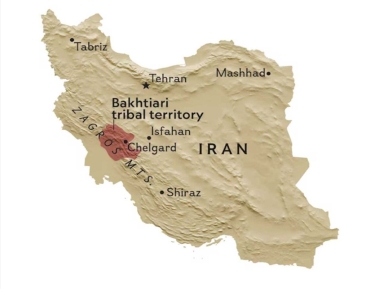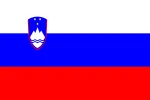History and origin of Bakhtiari carpet
The history of Bakhtiari carpets is deeply intertwined with the life of the Bakhtiari tribe of southwestern Persia. The tribe traditionally lived a nomadic lifestyle, which had a great influence on their carpet weaving techniques. The carpets were originally made by members of the Bakhtiari tribe for their own use, but over time they have become increasingly renowned in the Persian carpet market. Bakhtiari rugs have a special historical value, as the experiences and cultural influences of the tribe's migrations are reflected in the carpet designs and colours. The production of Bakhtiari rugs flourished in the late 19th and early 20th centuries, when the masterpieces of the tribal nomads reached the international market. The rugs were particularly popular for their durability and dense knotting, which made them ideal for the nomadic lifestyle. Each hand knotted Persian rug is unique and often tells the story of the tribe through symbolic elements.

What makes a Bakhtiari Persian rug special?
Bakhtiari rugs are among the most outstanding pieces of Persian rugs, as they have unique techniques and motifs that distinguish them from rugs made in other regions. One of their most striking features is the square pattern, which is one of the most recognisable motifs in Bakhtiari carpets. This pattern is often filled in with flowers, images of trees or geometric shapes that carry symbolic meanings related to nature and the cycle of life. Another special feature of Bakhtiari Persian carpets is the thick and dense knotting, which gives the carpets great durability. This is particularly important for the nomadic lifestyle of the tribe, where rugs are often used outdoors and need to withstand harsh conditions. Nomadic carpets are usually made from wool, dyed with natural dyes found in the local environment to ensure the appearance and quality of authentic carpets.
The production process of a Bakhtiari rug
The production of Bakhtiari rugs is based on artisanal techniques refined over centuries and deeply rooted in the culture of the tribe. The first step in the manufacturing process is the preparation of the raw material for the carpet, wool. The wool used for Bakhtiari carpets is usually obtained from local sheep, which are sheared by hand. The wool is then cleaned, spun and dyed with natural dyes. These dyes are made from plants, roots and minerals and guarantee durability and depth of colour. After dyeing, the process of weaving the carpet can begin. Traditionally, looms are set up in homes and carpets can take weeks or even months to complete, depending on the size and complexity. Bakhtiari rugs are made with a characteristically thick, dense knotting, which gives them exceptional durability and resistance. The hand knotting technique requires great precision and is passed down from generation to generation by experienced weavers.
 CarpetDepo magyarul
CarpetDepo magyarul
Online szőnyeg áruház prémium választékkal, ahol minden stílushoz megtalálja az ideális darabot. Gyors szállítás az ország egész területén.
 CarpetDepo română
CarpetDepo română
Magazin online de covoare cu o selecție rafinată pentru orice stil de interior. Livrare rapidă disponibilă pe teritoriul țării.
 CarpetDepo po polsku
CarpetDepo po polsku
Internetowy sklep z dywanami z wyjątkową ofertą do każdego wnętrza. Szybka dostawa dostępna na terenie kraju.
 CarpetDepo po slovensky
CarpetDepo po slovensky
Online obchod s kobercami s jedinečným výberom pre každý interiér. Rýchle doručenie v rámci krajiny.
 CarpetDepo česky
CarpetDepo česky
Online obchod s koberci s exkluzivní nabídkou pro každý interiér. Rychlé doručení po celé zemi.
 CarpetDepo auf Deutsch
CarpetDepo auf Deutsch
Online Teppichgeschäft mit einer erlesenen Auswahl für jedes Wohnambiente. Schnelle Lieferung innerhalb des Landes.
 CarpetDepo en français
CarpetDepo en français
Magasin en ligne de tapis avec une sélection raffinée pour tous les styles d’intérieur. Livraison rapide disponible dans le pays.
 CarpetDepo v slovenščini
CarpetDepo v slovenščini
Spletni trgovini s preprogami z izbrano ponudbo za vsak dom. Hitro dostavo nudimo po vsej državi.

